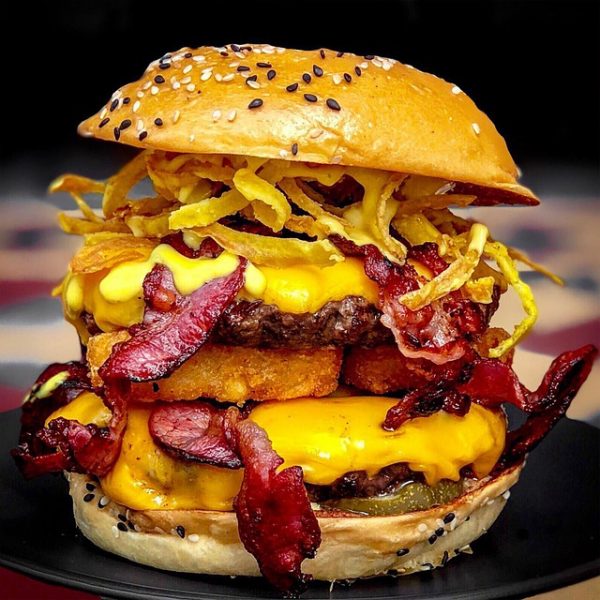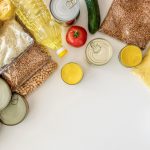Overeating is built into our genes. It comes from the days when our ancestors experienced long periods of famine.
Once food became available again, they didn’t just take five bites of it and say “Oh, I’m full. I’ll save the rest for leftovers tomorrow.”
No way!
They kept on eating… as much as they could for as long as they could. It was the only way they had to build up their energy stores to survive the next famine.
But today we don’t really have a feast and famine problem. You know that as well as I do.
If your stomach gives off even the slightest growl, the fridge is only 10 or 20 feet away. The kitchen cabinets are stocked. And there’s a Subway, Olive Garden or some other restaurant just down the street.
As a result, you could be eating a lot more calories than you should be. As a matter of fact, these days it’s estimated that the average American adult eats about 3,770 calories a day. That’s well above recommendations for both men and women.
However, your body has no idea that it’s not going to enter a period of starvation in the next week or month. So it just keeps on being hungry and saving up all that energy – which eventually turns to fat – and has a lot to do with the obesity problem here in the U.S
And I’ll be honest with you. It’s really easy to overeat without even realizing it. Plus…
Today’s Portion Sizes are HUGE
Back when I was growing up, I wasn’t allowed to leave the dinner table until my plate was empty. But in those days, a full plate consisted of about 5 ounces of meat, a small serving of some sort of starchy food, and a giant pile of vegetables. Dessert wasn’t an option. It was only served on special occasions.
These days it’s a whole ‘nother story. It’s not uncommon to see people in restaurants eating 16-ounce steaks with Texas-sized over-stuffed potatoes. (And that’s only what comes between the super-sized appetizers and overly sweetened desserts!)
Huge meals are what we’ve come to expect. But what they really are is a HUGE problem because, if you usually eat everything on your plate without giving it a second thought, chances are good that you are struggling with your weight.
You also have to remember that today’s foods aren’t the same as the ones your ancestors ate. These days about 40% of the average adults’ daily calories come from inflammatory vegetable oils, such as soybean, corn or canola oil. Another 25% is from processed grains and flours. (This doesn’t even include all of the high fructose corn sweeteners that are in just about everything that comes in a can, jar or package.)
We also load up on things like meat and gravy, pasta in cream sauces, pizza, burgers and cheesy casseroles. Not to mention chips, fries, packaged foods and pastries.
These are all energy dense foods. Just small amounts of them contain a high number of calories.
How To Get Rid of All Those Extra Calories
I often see patients who have been eating large portion sizes and too many calories for far too long. Now they want to release all of the “stored energy” that, unfortunately, has turned to fat.
What people don’t realize is that when you swap energy dense foods out for lower energy density options, you can eat a lot more food and get fewer calories!
Fruits, vegetables, beans, soups, stews, lean meats and foods with a high fiber content all have a low energy density. They provide a lot of nutrients, very few calories and often have a high-water content.
And it’s really easy to add them to your meals.
- Add extra vegetables to your soups, stews and meals.
- Choose grilled or roasted meats and vegetables over those that are fried.
- Include more beans, peas and lentils in your meals. Serve them as a side or add them to your soups, chilies, stews and salads.
- Go easy on the sauces. If you load your foods up with buttery and creamy sauces, you’ll end up making them more energy dense.
- When it comes to creamy deserts, opt for making them with plain Greek yogurt over other dairy products.
But when you do choose to eat foods with a high energy density, choose only the best of the best.
This includes foods like extra virgin olive oil, fatty fish, avocado, nuts and seeds that all have an important place in your diet. It’s also okay to enjoy reasonable portions of lean grassfed meat and pasture-raised poultry.
And don’t forget to watch your portion size!
SOURCES:
Marteau TM, et al. Downsizing: policy options to reduce portion sizes to help tackle obesity. BMJ. 2015 Dec 2;351:h5863.
What’s on your table? How America’s diet has changed over the decades. Pew Research Center. Dec 2016.
Buckland NJ, et al. A Low Energy–Dense Diet in the Context of a Weight-Management Program Affects Appetite Control in Overweight and Obese Women. J Nutr. 2018 May 1;148(5):798-806.
Stelmach-Mardas M, et al. Link between Food Energy Density and Body Weight Changes in Obese Adults. Nutrients. 2016 Apr; 8(4): 229.



